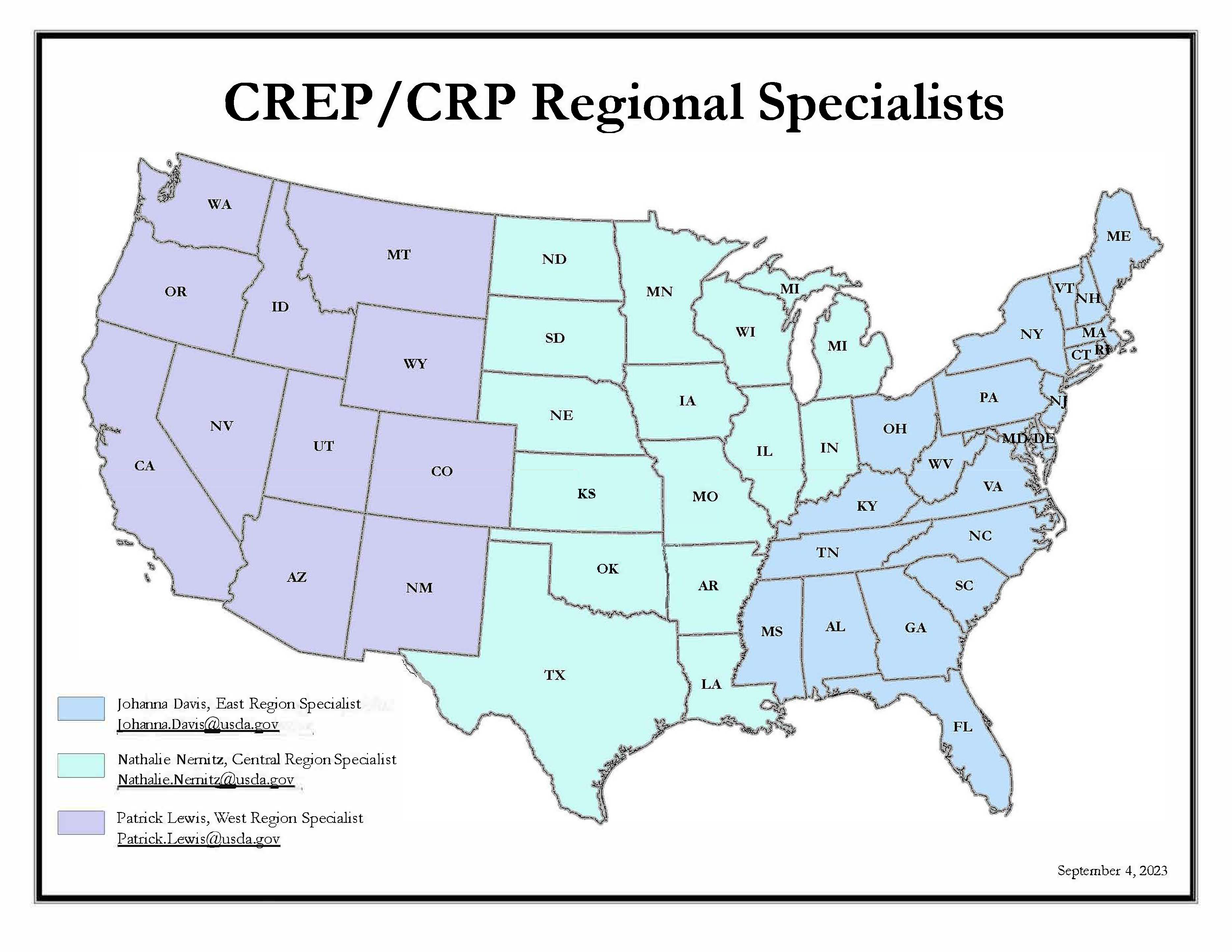Partner
Eligible CREP Partners
- State Governments
- Tribal Governments
- Non-Governmental Organizations (NGO), such as non-profits, private companies, and foundations
CREP Agreement
CREP is administered under the same statutes and Federal regulations as CRP. Policies and procedures generally adhere to those of the continuous CRP signup, except where modified by specific provisions outlined in CREP agreements and related State supplements to the 2-CRP Handbook.
CREP agreements are to be designed for specific geographic areas within a State or region that have been adversely impacted by agricultural activities through the use of approved conservation buffer or related practices.
CREP conservation practices must be designed to achieve substantial on-site and off-site natural resource benefits targeting 1 or more of the following goals:
- Restore/establish wildlife habitat
- Maintain or improve grassland productivity
- Enhance water quality
- Reduce soil erosion
- Enhance air quality
- Restore/enhance wetlands
- Promote conservation forestry
- Increase control of critical invasive species
- Enhance critical threatened and endangered plant and animal species survival
- Achieve a net water savings in ground and/or surface waters and conserve energy.
The achievement of multiple natural resource benefits through CREP is strongly encouraged.
Federal Commitments
To meet CREP goals, USDA provides financial, educational, and technical assistance to help producers voluntarily implement conservation practices that will enhance the environment in an economically efficient manner.
CREP Partner Commitments
Partners must typically provide 30 percent of the total project cost in the form of cash, in-kind contributions, or technical assistance. Each CREP agreement requires the partner provide an annual performance report which details program accomplishments, contributions to the project, and progress in meeting program goals.
Interested in Learning More About Partnering with USDA?
Contact the CREP Program Manager or CREP/CRP Regional Specialist for your state or region.• Kimberly Martin, CREP Program Manager, kimberly.martin@usda.gov
• Johanna Davis, East Regional Specialist, johanna.davis@usda.gov
• Nathalie Nemitz, Central Regional Specialist, nathalie.nemitz@usda.gov
• Patrick Lewis, West Regional Specialist, patrick.lewis@usda.gov


